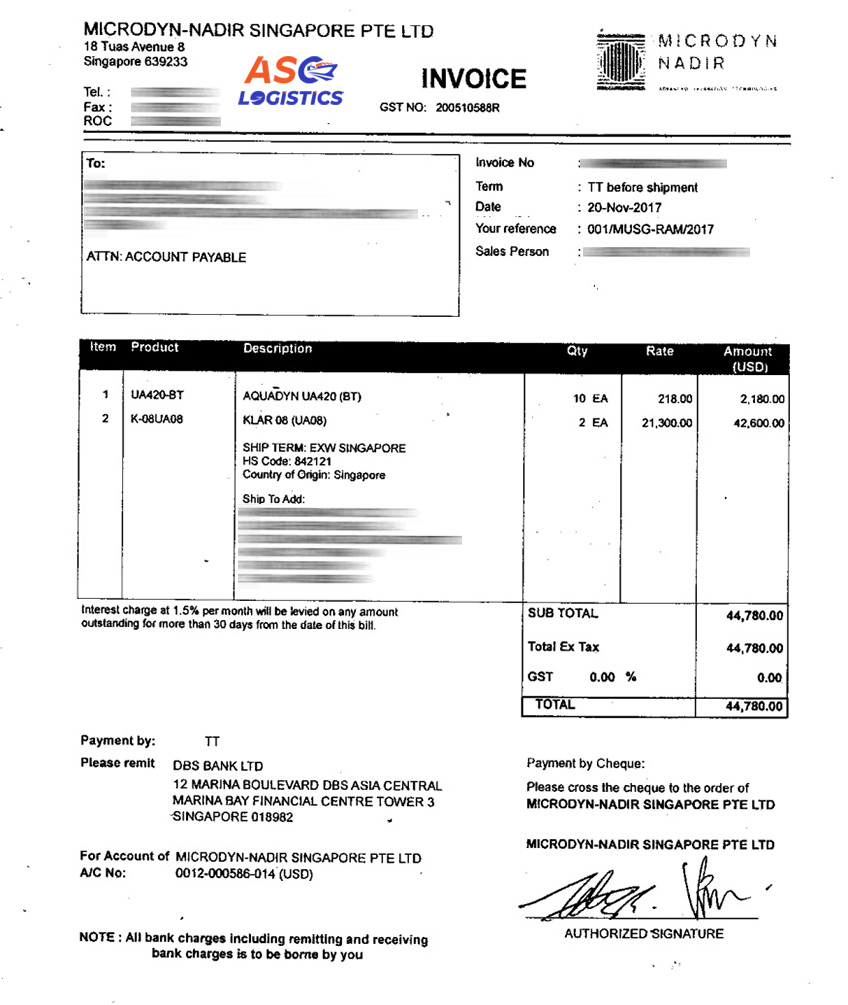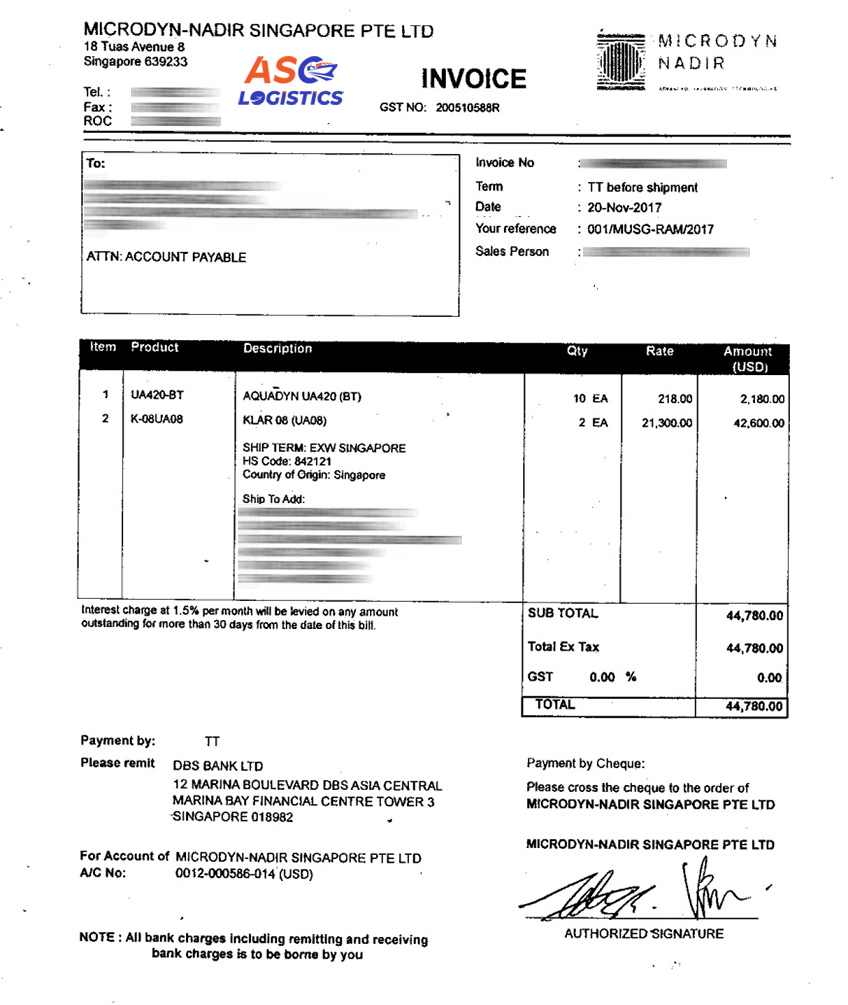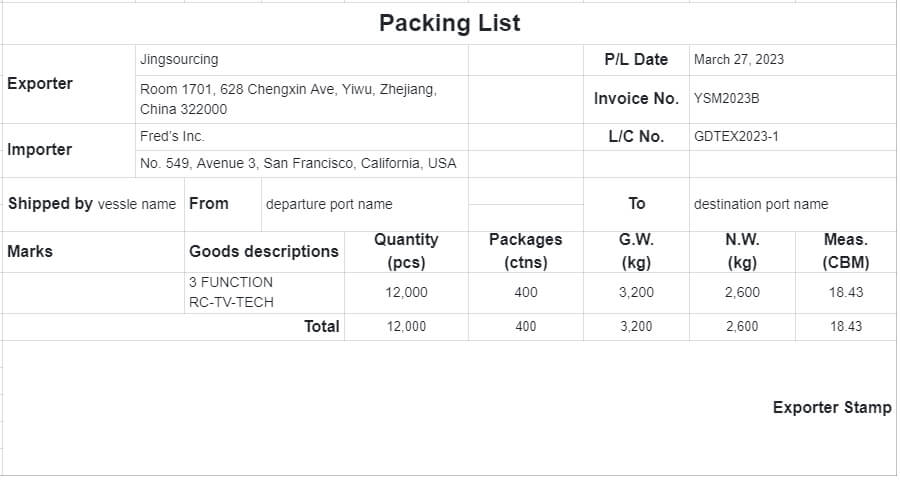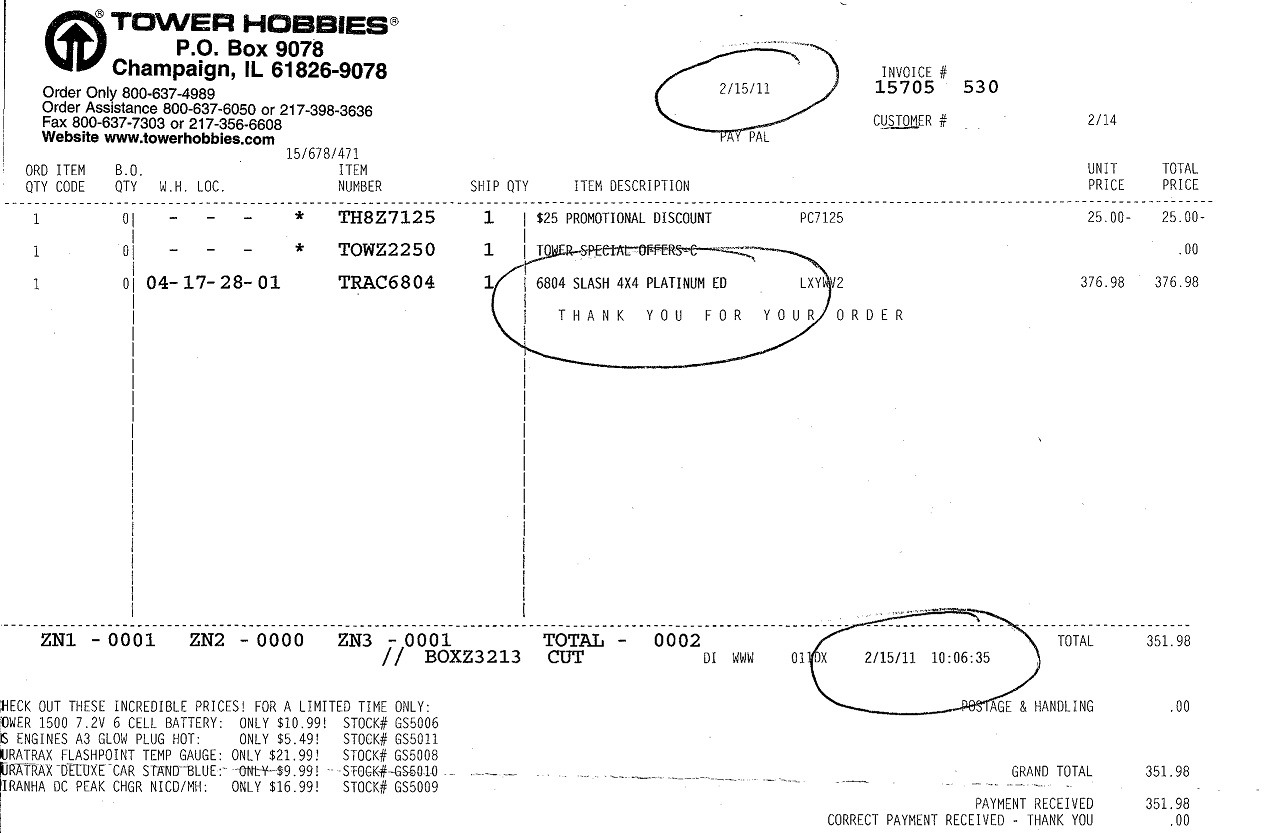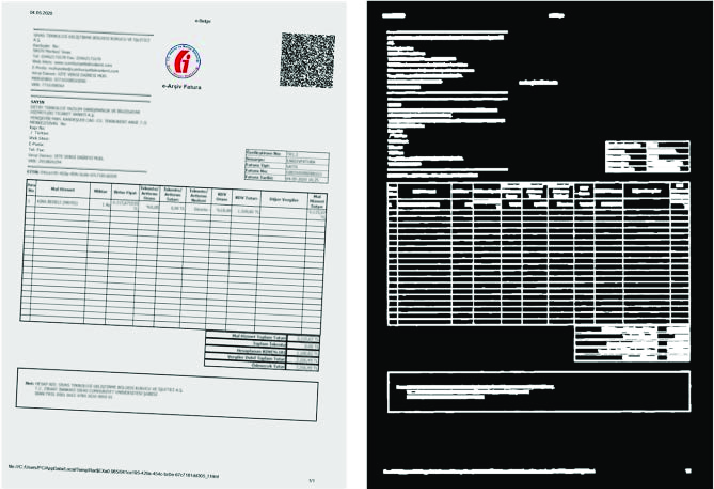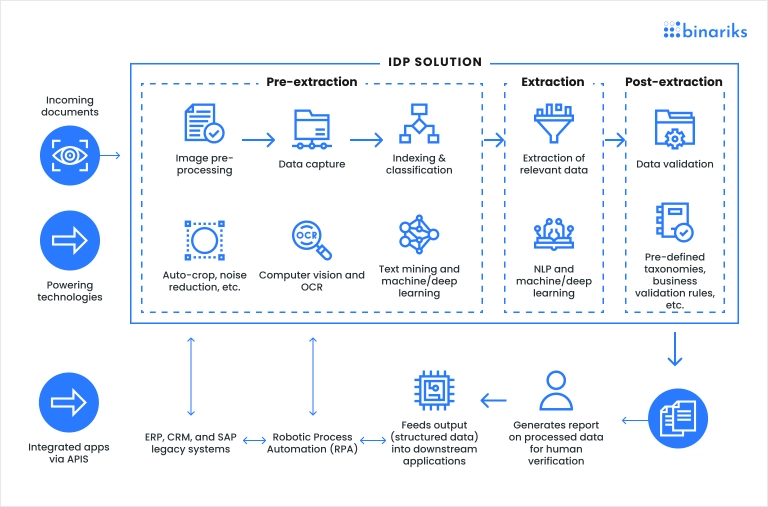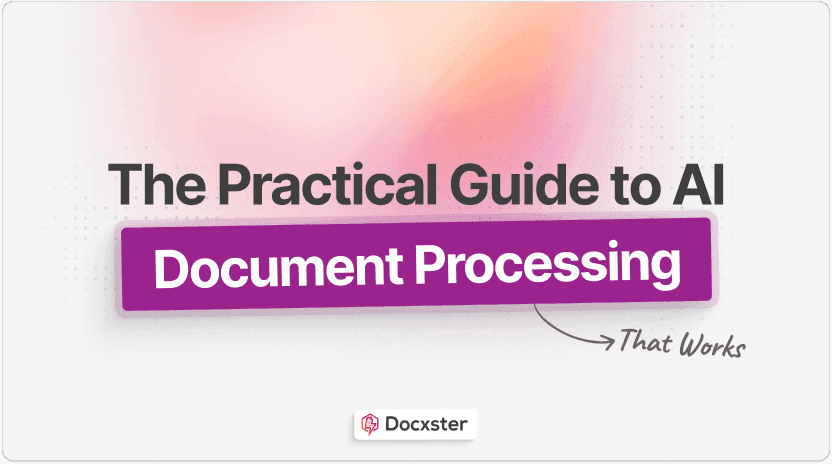
2024 was the year of AI. And the document processing space was no different. AI has been a key technology in this space—especially when intelligent document processing (IDP) slowly picked up steam in the past few years.
While traditionally, businesses relied on optical character recognition (OCR) to process documents, that’s not the case anymore. These tools were designed to read text, not understand it. As a result, your team spends days and weeks filling data gaps and fixing errors that you can avoid with artificial intelligence (AI).
In this article, we’ll explain how AI document processing works and why you should consider adopting it.
What is AI document processing?
AI-based document processing refers to a process where you use tools that combine machine learning (ML), natural language processing (NLP), and deep learning to extract and classify document data.
This allows businesses to:
- Process a wide range of documents, such as invoices, bank statements, purchase orders, freight bills, compliance documents, etc., without set templates.
- Extract key insights, not just raw text, with high accuracy—even from handwritten or multi-format documents.
- Automate document workflows to a significant extent, minimizing the need for human intervention.
What are the differences between OCR and AI-based document processing?
While traditional OCR systems primarily focus on text extraction, AI solutions process your documents keeping the content and context in mind.
Here’s how AI document processing compares to OCR-based document processing:
1. Type of technology
Traditional OCR technology relies on pattern and feature recognition algorithms to convert printed or scanned documents into digital, searchable data. It just recognizes and converts text but doesn't understand them.
That’s great for clean and structured documents. But for documents with different fonts, styles, and elements? Not so much.
On the other hand, AI document processing uses technologies such as machine learning (ML) and natural language processing (NLP) to do the same. The difference is that it doesn’t just recognize words. It understands the relationship between them and processes your document accordingly.
In the example below, an OCR would just pull the text-based data. But an AI-based document processor could identify who the signatures belong to and extract the rest of the content too. If you have a logo on it, it could identify the organization too.
Fun fact: This is a real customs declaration form that Apollo 11’s astronauts filled out after returning from their trip to the moon.
2. Adaptability to different document formats
Traditional OCR works best with standardized formats and requires pre-defined templates to extract data accurately. If your documents deviate from the standard format, it’s pointless. It struggles even when the format or layout changes slightly, requiring similar templates to process documents.
An example of a noisy packing list document
In the example above, a rule-based OCR will be able to pull the data from both invoices. But it may not parse through some sections because of how noisy the first document is. An AI-based document processor can parse through all of it and give the necessary output.
3. Contextual understanding of nuances
Traditional OCR extracts text but struggles to derive contextual meaning out of it. A basic OCR tool can copy words from a receipt but it won’t understand what the extracted text means. AI document processors on the other hand can figure this out.
In the example above, a rule-based OCR will be able to pull the data from both the invoices. But it’ll miss the context of the invoice and may not parse through some sections because of how noisy the first document is. So, you’ll get separate columns in your spreadsheet for the actual product—”Product” and “Goods Description."
An AI-based document processor won’t miss that. It can understand the relationship between these two descriptors and classify them as the same column header.
4. Level of accuracy and error reduction
The quality and clarity of your document is directly correlational to the OCR’s output. They work well for high-resolution scans with minimal noise and distortion.
There’s a good chance the documents you receive are far from perfect—especially if it’s handwritten. So, the OCR won’t be able to read it fully.
Invoices with high noise
Since AI document processing solutions use noise removal and skew correction techniques they can circumvent this problem. Plus, it validates the data against its pre-trained model to see if it actually makes sense. If not, it’ll flag it with a “low confidence score.”
5. Degree of scalability
With a traditional OCR system, every time a new vendor comes on board, you'd have to create a custom template for their documents. You’ll be constantly playing catch-up, scrambling to design and maintain these templates just to keep up with the influx of new vendors.
An AI document processing solution learns from each new vendor’s invoice format, automatically adapting as more variations come in. You won’t spend time reformatting templates or fixing inconsistencies in the future.
Technologies involved in AI document processing
Processing documents with AI is about understanding, structuring, and making data usable.
Whether it’s scanning invoices, analyzing contracts, or handling handwritten notes, different technologies such as OCR, NLP, ML, and deep learning algorithms work in concert to streamline business workflows and minimize manual effort.
1. Optical character recognition (OCR) technology
AI document processing uses OCR technology to convert scanned documents, PDFs, and images into machine-readable text for downstream processes.
OCR first analyzes the image or scanned document, separating the text from the background using techniques like thresholding and edge detection. This process isolates the areas of interest (text) from the non-textual elements (background patterns, images, etc.).
An example of edge detection
OCR then relies on pattern recognition and feature extraction algorithms to recognize characters. They break the image down into individual characters or symbols. Eventually, they match them to predefined character patterns and extract relevant text.
2. Machine learning (ML) algorithms
ML serves as the “intelligence” in AI document processing by studying actual data in different documents. It compares each new document against previous examples and does the following:
- Identifies patterns in text placement
- Tallies it against previous examples
- Fine-tunes how it extracts and validates critical data
As more documents flow through the AI system, it becomes increasingly accurate, automatically adapting to shifting formats or unexpected notations.
3. Natural language processing (NLP) algorithms
Natural Language Processing (NLP) transforms raw text into meaningful insights through contextual interpretation. Here are some of the techniques NLP uses:
- Sentiment analysis: This technology detects emotional tone in text with the help of linguistic rules. For instance, it can scan vendor/customer feedback to identify strong negative phrases such as "shipment delay" or "invoice overdue” for further investigation.
- Named Entity Recognition (NER): NER pulls addresses and invoice totals from diverse invoice formats to automate data capture. It uses contextual clues and pre-trained models to accurately extract relevant entities like addresses, invoice number, and the like.
- Document classification: This process uses supervised learning techniques to categorize documents based on their content by training on labeled datasets. As a result, your AI document processing tool understands whether you’ve uploaded an invoice or a waybill.
- Summarization: This technology uses both extractive and subtractive methods to summarize text. The extractive method picks the most important sentences while the abstractive method just condenses the text.
4. Deep learning algorithms
Unlike ML, which follows pre-set rules to extract data, Deep Learning (DL) learns on its own by analyzing thousands of documents, telling the AI what patterns to look for. Using neural networks trained on massive datasets, DL recognizes complex patterns and relationships, just like how humans learn by example.
That means deep learning models don’t just look at individual characters or words—they analyze entire document structures. It knows that “Qty” on one invoice might be “Quantity” on another, and it adapts without needing new rules.
5. Computer vision
Computer vision is the extra pair of eyes that can catch missing details (that an OCR is unlikely to catch). OCR will see words, but Computer Vision sees everything on the page—logos, signatures, stamps, graphs, even handwritten notes.
How computer vision identifies details on a page and classifies them
Let’s say you’re verifying compliance certificates. A stamp on a certificate might indicate approval. But if the AI only reads the text and ignores the stamp, it’s missing critical information. Computer vision recognizes that stamp, verifies its presence, and ensures nothing is overlooked.
6. Pre-processing extraction techniques
While the other technologies work well to make your document processing workflow more intelligent, there are underlying technologies that handle the grunt work. For example:
- Binarization sharpens faded text, turning low-contrast scans into crisp, high-contrast images.
- Noise reduction clears out smudges, ink marks, and artifacts, so OCR isn’t tripping over stray dots or stains.
- Alignment correction straightens skewed scans, keeping tables, columns, and key fields structured exactly as they should be.
Example of noise reduction in a document
Let’s say your team just received a fresh batch of invoices. Some are clean PDFs, others are scanned copies, and then there’s that one vendor who sent a crumpled, handwritten invoice that looks like it survived a coffee spill. Preprocessing removes all the inconsistencies and extracts the data.
What are the benefits of using AI for document processing?
AI cuts document processing time from weeks to minutes. By automating manual tasks, it reduces the need for extensive human oversight and minimizes costly rework due to manual errors.
Here’s a rundown on how AI can positively impact document-heavy operations:
1. Increases efficiency and optimizes resources
The main benefit of AI document processing is efficiency. These tools process and extract data in seconds—drastically reducing the time to process. Now, you won’t spend days manually entering, validating, and moving the data around.
Organizations like SEBI have already experienced this. They’ve been using AI to automate data extraction from REIT and InvIT filings—so much so that AI does 80% of the work now. Their employees only come in when they have to validate the extracted data.
The result? They get more time to focus on higher-value tasks like providing regulatory oversight and reviewing compliance with relevant legislations.
2. Improves data accuracy
IDP reduces human errors by using automated validation checks and machine learning improvements. With a human-in-the-loop approach, AI learns from past mistakes to ensure data consistency over time.
For instance, companies like Profit Leap reduced invoice processing time by 15% in just six months by automating the process.
The time they saved was a result of lesser time spent on data entry, validation, and correction.
“Manual data extraction used to take up about 40% of our team's efforts, especially with documents like invoices, client contracts, and tax filings causing delays,” explains Victor Santoro, founder and CEO of Profit Leap. “To address this, we implemented process optimization strategies that reduced invoice processing times.”
3. Streamlines operations and drives down costs
You can reduce the need for large teams and reduce operational costs while improving speed and efficiency. AI processing systems allow companies to scale operations without increasing labor costs.
In fact, Ashok Leyland, one of India’s leading commercial vehicle manufacturers, has used AI in document processing to achieve a four-fold reduction in processing costs and cut payment times by 60%. This has streamlined their invoice processing across the supply chain, accelerating payment cycles and reducing inefficiencies.
4. Helps scale your business
Scaling document processing isn’t just about handling more documents—it’s about doing so without hiring extra staff or overhauling infrastructure.
Typically, document volume spikes when:
- You’re scaling your business and entering new markets
- You’re experiencing a peak in your business cycle (end-of-year reporting)
- You’re dealing with a high production/supply demand
- You’re spearheading new paper-based projects
In either case, you’ll scramble to add more people, extend working hours, or delay processing.
With AI document processors, you won’t experience this. You don’t need extra analysts manually reviewing invoices, contracts, or compliance documents. Or you don’t have to make sure your teams work overtime. Since AI can process thousands of documents without stopping, you can keep your costs low.
5. Accelerates decision-making
Finance and operations teams typically don’t have the luxury of waiting hours or days for data to be processed manually. Delays due to manual data entry stall approvals, slow down workflows, and even disrupt cash flow. It all comes down to: how much time are you willing to waste?
Eugene Lebedev, managing director at Vidi Corp Ltd. says that this is the main business case for AI-based document automation. He recommends asking questions like:
- How much time is my team spending right now on performing the tasks manually?
- What if I multiply this time by their hourly rate? How much is this costing me?
- If my team had all this extra time, what would I have them do? What benefits would this bring to the business?
With all the time you get back, you can make faster decisions. For instance, you don’t have to spend time finding duplicate or unpaid invoices for reconciliation. The data’s already there—now you can decide if you’ll accrue it or not.
How does AI document processing work?
Now that you know how AI helps your team process documents faster, let’s see how it works.
Here’s a step-by-step workflow on how AI document processing works:
Step 1: Ingest your documents
The first step of the process is to process the right documents. In our experience, we’ve seen teams get different types of documents from literally everywhere. Google Drive, Gmail, WhatsApp, Dropbox. You name it and we’ve seen it.
That’s why you need a document processing platform that can ingest documents from the necessary sources.
Let’s say you want to process documents that come via a dedicated email ID. Your AI platform should be able to import the document from that ID and run it through its OCR engine. For instance, Docxster uses a high-accuracy OCR to extract data from handwritten and electronic documents.
All you have to do is upload it into our processor and it’ll handle it in minutes.
Step 2: Preprocess your documents
Preprocessing removes any noise or distortions that could impact your document’s readability. Because we use AI-based models to handle this part, you don’t have to worry about doing it manually.
For instance, if an invoice is scanned at an odd angle, pre-processing straightens it out so that every line and column are aligned appropriately.
Step 3: Classify documents based on type/format
Since different business documents (invoices, contracts, shipping receipts, purchase orders) each have distinct layouts, AI automatically identifies types of documents by analyzing patterns and classifies them.
The platform then routes each document to the appropriate processing workflow and gets them ready for the next step, data extraction. This replaces the manual sorting process and lets you skip to the extraction part.
Step 4: Extract relevant data for analysis
Now, the processing tool extracts key data points from your document. For instance, Docxster uses field mapping to precisely identify and map standard fields across:
- Structured documents
- Semi-structured documents
- Unstructured documents
Here’s an example of how that works:
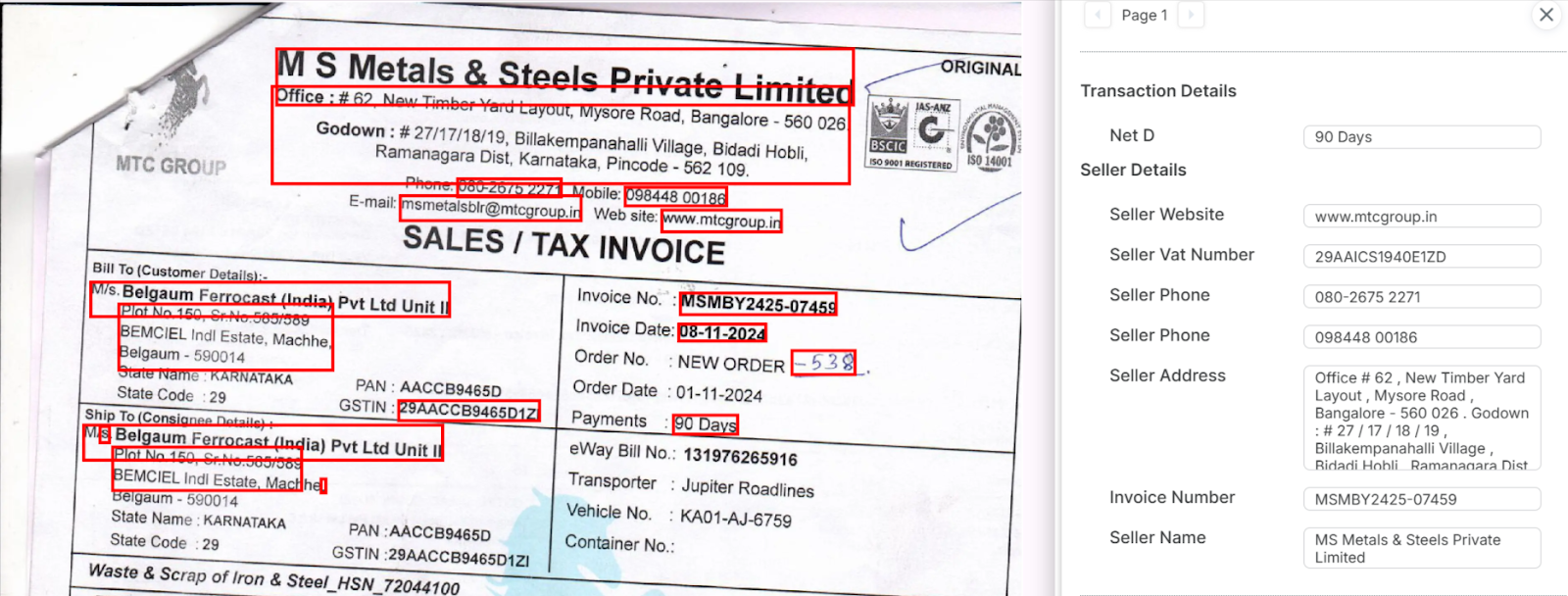
You don’t have to train your own models to do it. However, we do provide the option to do it if you have documents with complex structures like an engineering diagram or similar.
Step 5: Validate the extracted data for accuracy and compliance
Once data is extracted, the platform validates the data using predefined business rules. For example:
- Cross-checking invoice totals against purchase orders to detect inconsistencies
- Verifying tax IDs, vendor details, and payment terms with existing records
- Flagging duplicate or potentially fraudulent transactions for review
And if you want to add a human in the loop, you’re more than welcome to. We offer automated and Human-in-the-Loop (HITL) validation steps. If you want a team member to review the extraction quality, simply add that into the workflow and Docxster will notify the respective team member when needed.
If they flag a correction, the AI model learns from these errors and improves over time.
Step 6: Export verified data to relevant platforms
Once the post-processing is completed, you can export the validated data into enterprise systems such as ERP, CRM, and financial reporting tools. You can do it using the following methods:
- Integration with SAP, QuickBooks, Salesforce, and other enterprise platforms
- Connecting different tools in your document workflow using Zapier
- Data export in various formats (CSV, JSON, PDF) for analytics and reporting
What roadblocks can you expect when using AI document processing tools?
Automation isn’t a one-and-done task. You need to continuously refine the workflow to fit your needs.
Here’s a quick rundown of bottlenecks that you might face while using AI document processing systems:
1. Extent of accuracy
We do have to note that the accuracy of your AI platform heavily depends on the training data and document quality. For instance, if you’re only using one invoice format to train the model, you won’t be able to experience the true value of AI platforms.
Make sure you’re either choosing a platform that’s trained on a varied dataset or it gives you the option to create your own AI processing model.
With Docxster, you get both. Since our AI processing system has been trained on unstructured, structured, and semi-structured documents, you don’t have to worry about low accuracy.
2. Deployment complexity
If the underlying infrastructure of your tool isn’t ready, automation won’t fix inefficiencies. It’d amplify them instead.
Lawrence Guyot, president of ETTE, says:
“Many businesses attempt to automate their document processes without ensuring their IT systems can handle the required data flow and processing power. We focus on upgrading the client’s IT infrastructure before implementing cloud-based document processing, which helps the tool handle the data later on.”
Spend some time either testing the platform you plan on using or choose a platform that lets you train your own models.
3. Data privacy and security
A 2024 Capgemini report on data privacy reveals that nearly 45% of companies cite privacy concerns as a barrier to AI adoption. Protecting sensitive information is a no-brainer for building trust and preventing compliance issues.
Platforms like Docxster are GDPR and ISO 27000 compliant and offer secure document management solutions to overcome this challenge.
4. Integration with existing systems
The reality is that your document processing workflows are messy. You’re constantly moving data from one tool to another. For example, if you’re a logistics company, you probably use the following tools:
- Gmail/Outlook/WhatsApp to receive documents
- Google Drive/OneDrive/Sharepoint to manage documents
- Google Sheets/Microsoft Excel to store data
- Tally or SAP to tally your data across multiple documents
Your document processing tool should integrate with them. At the very least, you should be able to export them in a standard format for easy uploads.
5. User adoption
There’s a good chance your team either doesn’t want to use AI because they’re worried it’ll take their jobs. Or they don’t have the time to learn a new platform.
At Docxster, we understand both these concerns. It’s one of the reasons we built a no-code AI document processing tool for non-technical users. Automation shouldn’t be limited to your IT team—and everybody deserves a chance to spend time on more strategic tasks that’ll help them climb the professional ladder.
Also, Guyot recommends conducting training sessions before rolling out the tool internally. That’s how he has been able to increase his client’s system utilization rate by 50% across the board.
6. Implementation costs
AI-powered document processing should save money, not create hidden costs. But a 2024 Lucidworks report shows that concerns over AI deployment expenses have jumped from 3% to 46% in just one year—largely due to unexpected infrastructure fees and unpredictable AI processing costs.
The cost for AI document processing tools can differ from pennies for a single page to multi-thousand dollar annual contracts these days. So, consider the following:
- How many non-technical users will use the tool?
- Do they need extensive training and resources?
- Are you getting pre-trained models from the get go?
- How much time will you need to spend on ramping up?
- Would you prefer to build the workflows yourself or get IT involved?
- What payment options does the platform offer?
The most cost-effective solutions charge you based on the number of workflows/documents and give you monthly subscription options.
Make AI work for your document processing needs
If you’re still using manual document processing workflows, you’re missing out on huge efficiency and revenue gains.
The reality is that many businesses delay adoption not because AI isn’t effective. It’s because of the fear of change and the effort required to modernize their workflows and embrace digital transformation. And we understand.
There’s an opportunity cost to changing your workflows—but the question remains:
Will your business actually be future-proof when these operational challenges remain 5, 10, 20 years from now?
Get Document Intelligence in Your Inbox.
Actionable tips, automation trends, and exclusive product updates.

